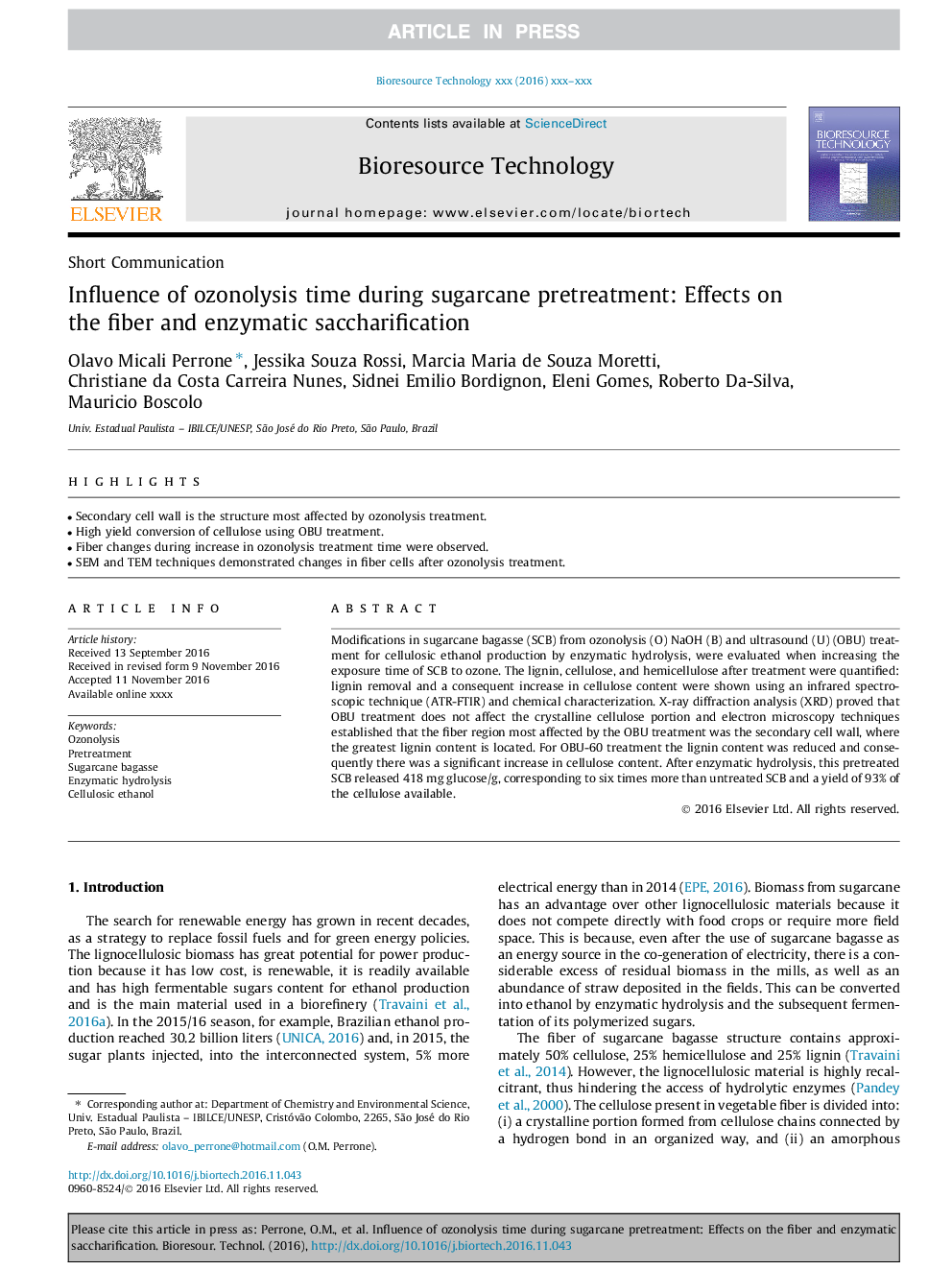| Article ID | Journal | Published Year | Pages | File Type |
|---|---|---|---|---|
| 4997899 | Bioresource Technology | 2017 | 5 Pages |
Abstract
Modifications in sugarcane bagasse (SCB) from ozonolysis (O) NaOH (B) and ultrasound (U) (OBU) treatment for cellulosic ethanol production by enzymatic hydrolysis, were evaluated when increasing the exposure time of SCB to ozone. The lignin, cellulose, and hemicellulose after treatment were quantified: lignin removal and a consequent increase in cellulose content were shown using an infrared spectroscopic technique (ATR-FTIR) and chemical characterization. X-ray diffraction analysis (XRD) proved that OBU treatment does not affect the crystalline cellulose portion and electron microscopy techniques established that the fiber region most affected by the OBU treatment was the secondary cell wall, where the greatest lignin content is located. For OBU-60 treatment the lignin content was reduced and consequently there was a significant increase in cellulose content. After enzymatic hydrolysis, this pretreated SCB released 418 mg glucose/g, corresponding to six times more than untreated SCB and a yield of 93% of the cellulose available.
Related Topics
Physical Sciences and Engineering
Chemical Engineering
Process Chemistry and Technology
Authors
Olavo Micali Perrone, Jessika Souza Rossi, Marcia Maria de Souza Moretti, Christiane da Costa Carreira Nunes, Sidnei Emilio Bordignon, Eleni Gomes, Roberto Da-Silva, Mauricio Boscolo,
